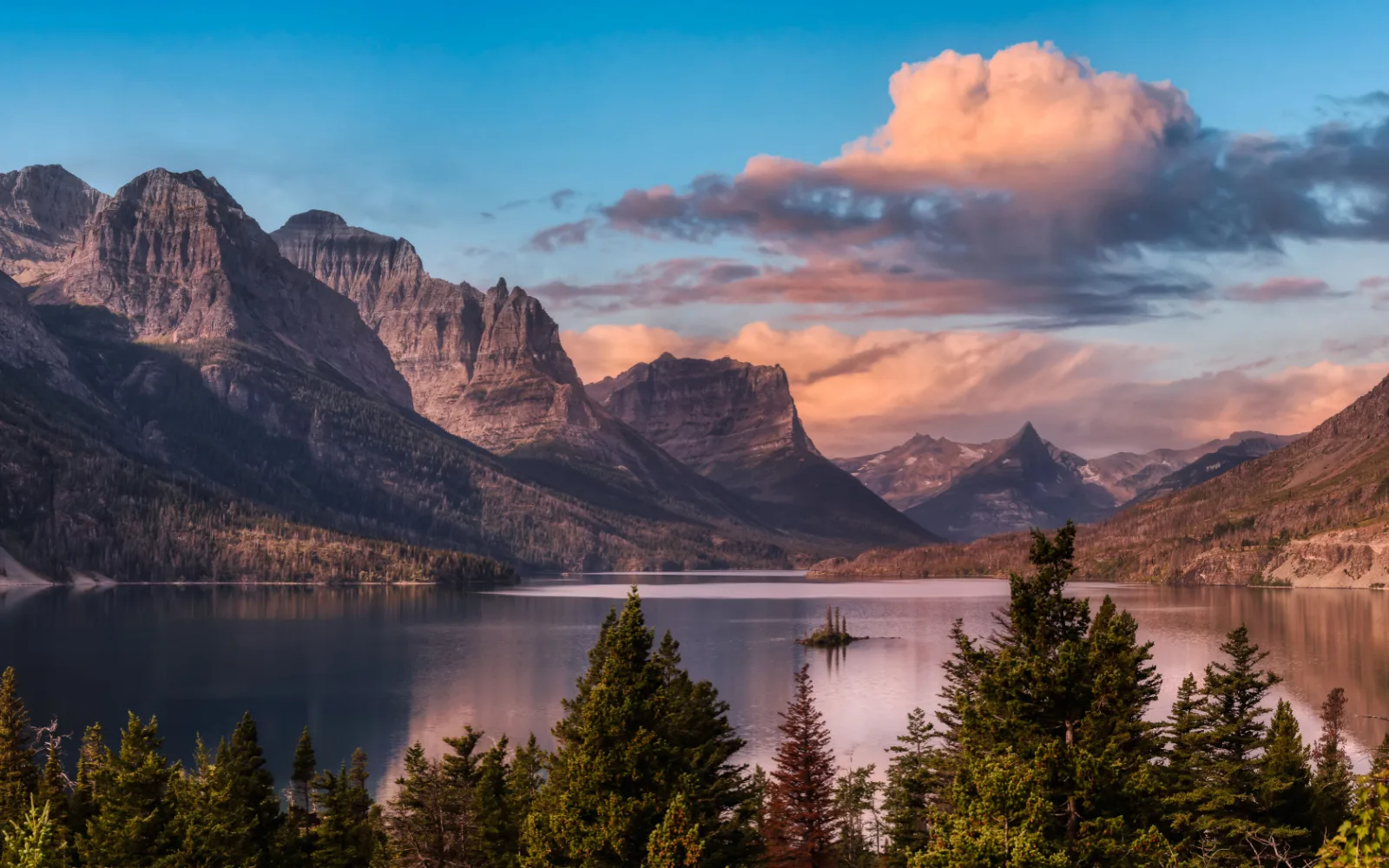John Steinbeck once said, “For other states I have admiration, respect, recognition, even some affection. But with Montana, it is love.” He added, “It seems to me Montana is a great splash of grandeur.”
And most people who have visited or driven through Big Sky Country would agree. As its nickname suggests, the views here are sweeping. The wilderness is impressive.
And your proximity to nature is so complete as to be almost spiritual. (Or, depending on your point of view, very much so!) While I have never cooled my heels in the Treasure State, I have driven through it more than once, and the experience has always left me awestruck.
Split by the staggering Continental Divide, home to the Lower US’s only grizzly population, and chock-full of wildlife such as bison, bighorn, moose, otters, and gray wolves, you can’t go wrong as a nature lover.
Frankly, though, anyone who loves a good vista will immediately understand what Steinbeck is talking about.
If you’re hoping to plan a trip here in the next year or so, it pays to understand the basic costs you’re looking at and make the best plan for coming in at – or under! – budget. We’re here to help you meet that goal, so read on.
Average Trip to Montana Cost in 2025
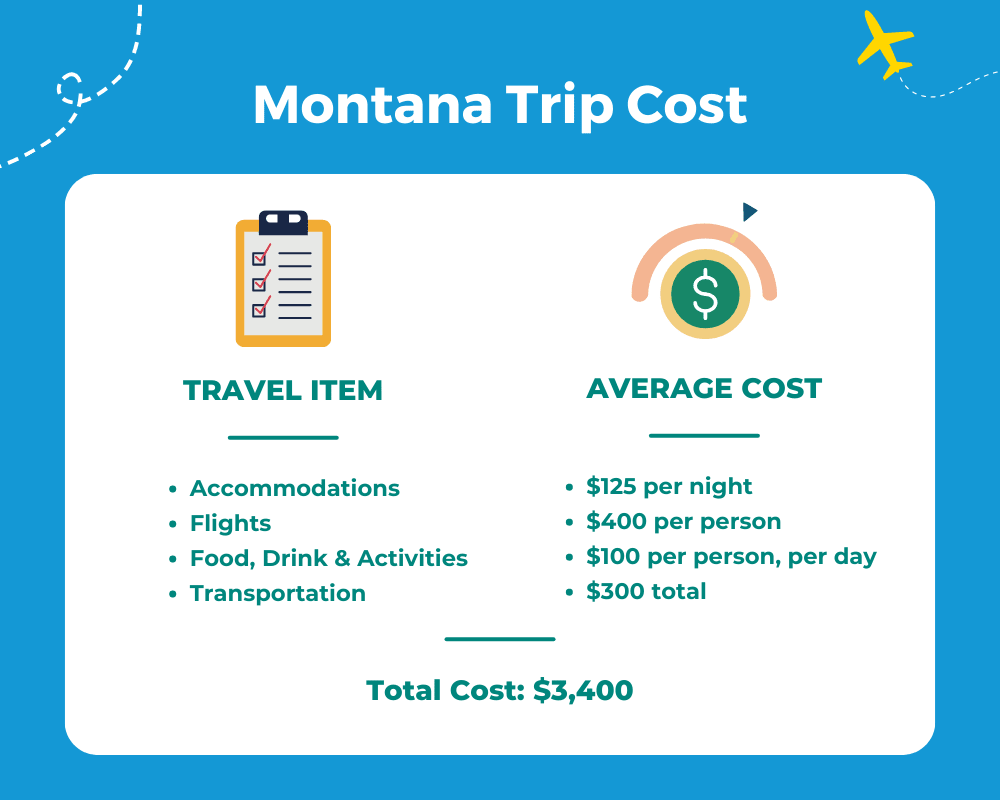
An average one-week trip to Montana for two people will cost around $3,400:
- Average Accommodation Cost: $125 per night
- Average Flight Cost: $400 per person
- Food, Drink & Activities: $100 per person, per day
- Transportation: $300 total
- Total Cost: $3,400
As one of the United States, Montana is cheaper to get to and easier to budget for than an international destination.
It’s also simple to drive to if you live in the Pacific Northwest, Southwest, or Midwest (though you’ll need to budget a few days to get there and back) and you don’t need a passport.
All told, it’s a very affordable trip. There are plenty of ways to make it more affordable as well. Note, though, that averaging the cost of a trip is always a dicey proposition.
If you go during the low season, you can save considerable funds on airfare and lodgings, while the high season will mean a surcharge on both. Those willing to eat out of grocery stores and avail themselves of continental breakfasts will naturally spend less than foodies who want to try the best restaurants and food trucks.
And if you’re a hiking type who can get by on one park pass, you’ll save beaucoup bucks compared to daily tours with experienced guides. Let’s take a look.
Montana Trip Cost: Average by Item
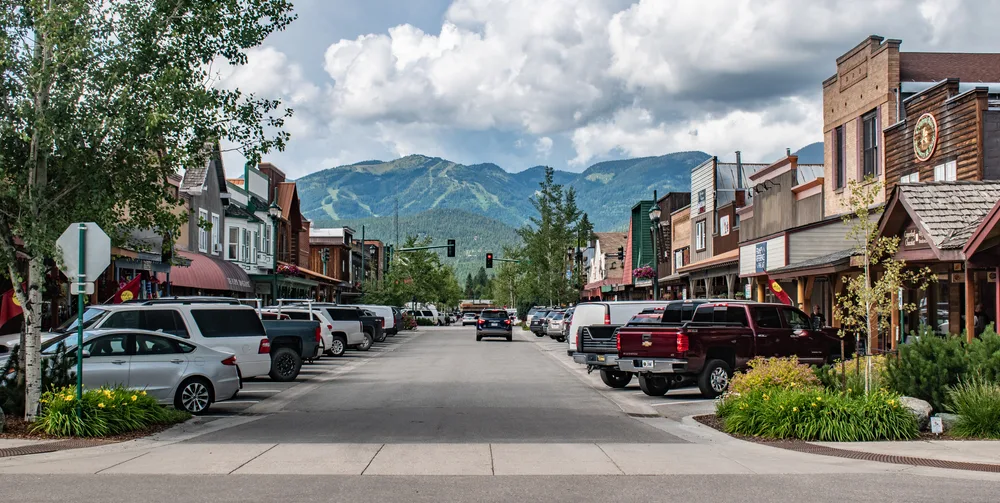
Whitefish, MT,USA – Juli 3 2019 – Mainstreet in Whitefish still has a smalltown feel to it. The town attracts many tourists in summer and winter./Beeldtype/Shutterstock
As mentioned above, you can spend more or less on your trip depending on how you like to vacation. There’s something to be said for all approaches to travel, and you can save money in some areas while spending out in others.
It’s all up to you. Below we’ve provided some basic cost estimations so you can start trip planning today!
Accommodation Costs
For a typical 2- to 3-star hotel in a Montana city, plan on about $100. If you’re planning to stay at a resort – which you might do to be close to Yellowstone in summer or skiing areas in winter – that will run you closer to $300 a night.
However, Montana is excellent for camping. Spots usually run between $5 and $40 a night, depending on when you go and what types of amenities the campground offers. If you want to make room in the budget to stay a few nights at a resort, consider car camping in between.
If you wait for deals, you can find cute guesthouses or rooms on Airbnb for about $125 to $150. Overall, you can get away with a budget of $125 a night – an average of camping, hotels, and a night or two at a resort.
Flight Costs
Flying from a major hub to Montana will cost you about $300, while flying from a smaller airport will cost more like $400 to $500. Call it $400 on average per person, round trip, though this amount will likely be lower in the “shoulder seasons” – spring and fall.
One of the best ways to save money when searching for flights is to browse in incognito mode. Otherwise, your browser saves cookies that tell search engines and travel sites that you’re interested in a ticket to a particular destination.
Airlines and aggregators (think Kayak or Expedia) will make a note and may charge you more next time on the assumption that you’re willing to pay. Stick to incognito until you’re ready to buy! (The same goes for hotels and activities, btw.)
Where possible, play with your flight times. It’s surprising how much shifting your flights a day in one direction or another can mean when it comes to savings. Ideally, you can leave and return midweek for a one-week trip, which will almost always save you money – sometimes to the tune of hundreds of dollars!
If your work schedule makes inflexibility impossible, never fear; there are other ways to save.
Food, Drink & Activity Costs
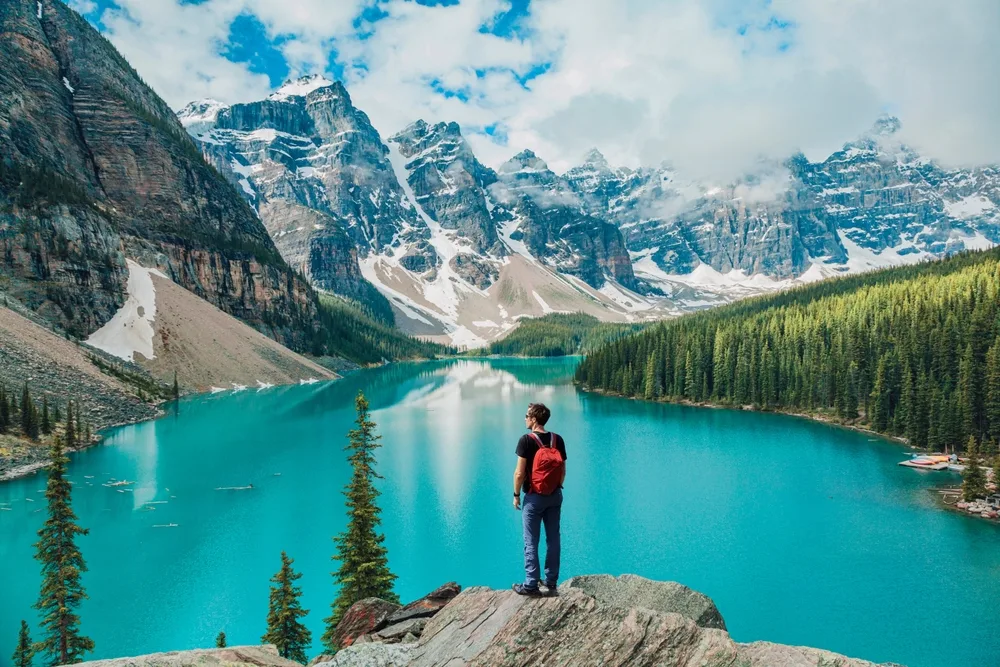
Maridav/Shutterstock
As Montana is part of the US, you should assume you’ll pay equivalent amounts for food that you would anywhere. Grocery costs are only 2% higher than elsewhere in America, and restaurant fare is reasonable as well.
Money-saving tips for food and drink include:
- Shopping at grocery stores for snacks and lunches
- Bringing freezable snack coolers (available in a variety of patterns) for protein-rich bites throughout the day
- Find hotels with a free breakfast, of which there are many
- Bring a refillable water bottle
- Buy booze at grocery stores if you want drinks in the evening
- Choose the restaurants at which you really want to eat before your trip so you don’t make bad or costly decisions once hungry
Many people come to Montana for the hiking and horseback riding. The national parks are breathtaking, Glacier and Yellowstone representing two of the oldest and most venerated in the country.
Entrance into these parks costs $35 per vehicle, per visit. If you’re going to go more than once, it pays to get the America the Beautiful National Park pass for only $80.’
If you visit a third national park in the same year, it has paid for itself. The Charlie Russel Chew Choo is another fabulous Montana activity, perfect for couples and families.
Get sweeping views of the Big Sky Country from its windows while you enjoy a lovely meal in courses, along with a sunset experience, musical entertainment, and hardcore Western Vibes – all for less than $140.
(Pro tip: if you’re traveling with little ones, wait until the holidays and take the North Pole Adventure Train, an hour-and-a-half experience that includes Christmas stories and cookies.)
You may also enjoy the Lewis and Clark Interpretive Center, a meticulously maintained space where you can learn all about Montana’s wilderness and history.
“Managed by the USDA Forest Service, the 25,000 square-foot building includes the permanent exhibit hall, 158-seat theater, an education room for hands-on curriculum-based activities, and a retail store,” says its website. At only $8 per person (free for those under 16), it’s a steal of an activity.
In general, plan to spend about $100 per day. This gives you plenty of wiggle room for a park pass, several guided activities, and some nice dinners along with grocery store fare and street food.
Transportation Costs
Transportation in Montana is roughly equivalent to other places in the US, though more affordable than the big cities. A bus fare will cost you about $2, while a tax ride from Bozeman Airport to the city proper is about $50.
If possible, it’s probably a good idea to rent a car. This will only cost you about $25 a day (or less), and you can travel easily between cities as well as to the national parks and other more rural destinations.
Overall, factoring in an airport ride and a few shuttle tours or a rental car and gas, plan to spend about $300 on transportation.
Things to Consider
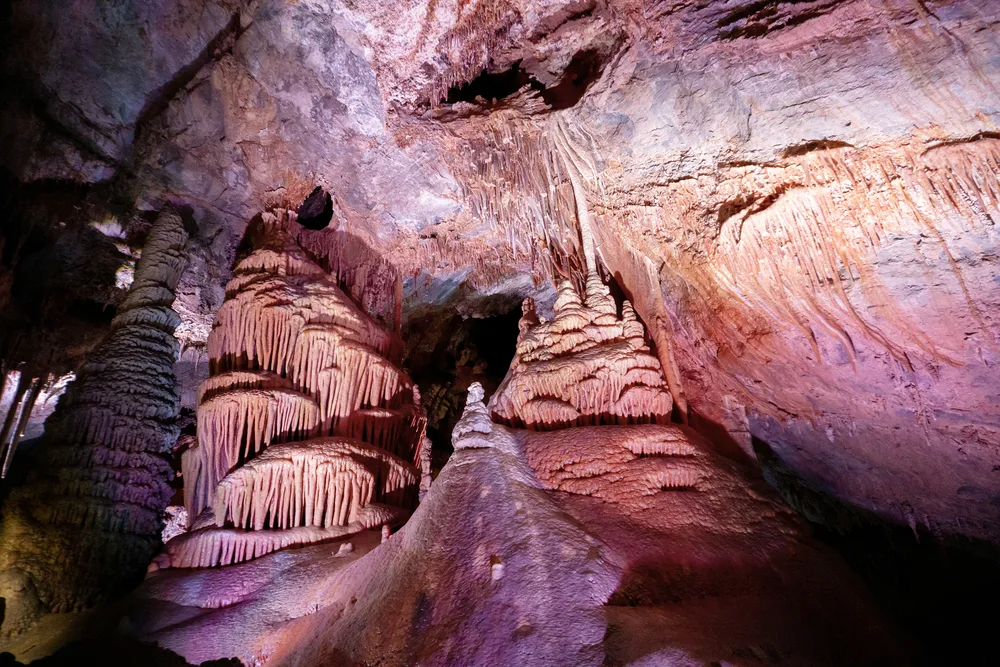
Ronnie Chua/Shutterstock
Here are a few other things to consider when planning your trip to Montana:
- Montana has lots of festivals, so if you’re the type, check out the events calendar and plan your trip around that. From the Montana Folk Festival in Butte, the An Ri Ra Irish Festival, the Bozeman Sweet Pea Festival, or Magic City Blues in Billings.
- Flathead Lake is reportedly gorgeous, said by some to be Montana’s most beautiful. Consider putting it on the itinerary. Bonus: it’s in Flathead National Forest, so you’ll enjoy a beautiful drive there.
- Lewis and Clark Caverns are pretty stunning, if you’re in the mood for some underground adventure. Lewis and Clark Caverns State Park also includes 10 miles of hiking trails, two visitor centers, and camping.
- VRBO and Airbnb both offer many Montana stays. If you want to skip the relative lack of privacy of hotels, this is a good way to go. If you skip extra amenities like hot tubs and full kitchens, you likely won’t even pay more than you would at a 4-star hotel or a B&B.
Frequently Asked Questions
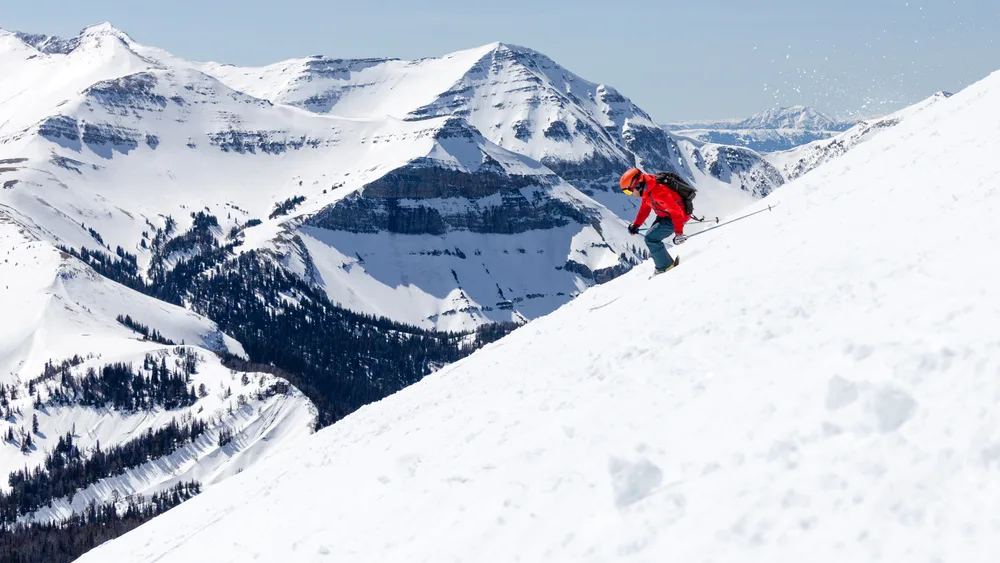
alexfe/Shutterstock
Which national parks are in Montana?
In Montana, you can visit Glacier and Yellowstone National Parks. Great Bear Wilderness and Gates of the Mountains Wilderness are also beautiful destinations, where you can hike, bird watch, and bathe in the beauty of nature.
It might be worth looking into your passport status. Glacier National Park borders Canada’s Waterton Lakes National Park, a gorgeous continuation of the wilderness area above the border. If you wish to hike into Canada for a day, you’ll need a passport. (You won’t if you instead opt for a cruise through a travel company, where you can enter Canadian waters without documentation.)
Am I in danger from wildlife if I hike in remote destinations?
You should always be aware of your surroundings when hiking remotely. Bring bear spray and follow the National Park Service’s wildlife safety guidelines.
Note also that such destinations are very vulnerable to wildfire in the summertime. Always follow fire restrictions to the letter, never light campfires when there are burn bans in effect, and don’t smoke cigarettes or light fireworks in the wilderness.
In addition to harming natural areas and endangering human settlements, you can lose your life.
Is it safe in Montana?
Montana’s crime rate is actually above average for the United States, so you should take additional precautions. Although it’s in the US, you might want to leave your valuable jewelry at home. Don’t walk alone at night in a city – or anywhere – especially as a woman.
When is the best time to visit Montana?
The best time to visit Montana depends on what you want to do there. If you’re there for the skiing and snowshoeing, opt for November, when there’s snow on the ground but peak winter season (December to March) hasn’t arrived yet. This will save you money.
Montana is also great for hiking, canoeing, camping, fishing, and other outdoor sports.
If that’s your goal, then June through August are the best months … but they’re also the most expensive. You can enjoy some good weather and still get most of your outdoor activities in if you go in late spring or early fall.
Is it easy to get around in Montana?
Montana’s cities have good public transportation, and cabs aren’t any more expensive than in the rest of the country. Both Lyft and Uber are good options, but make sure if you’re traveling alone in a car that you remain aware of your surroundings and track your ride to your destination to make sure that’s where you’re going.
So, What Is the Average Cost of a Trip to Montana?
| 🛎️ Average Accommodation Cost | $125 per night |
| ✈️ Average Flight Cost | $400 per person |
| 🍽️ Food, Drink & Activities | $100 per person, per day |
| 🚕 Transportation | $300 total |
| 💲 Total Cost | $3,400 |
The average cost of a one-week trip to Montana is around $3,400 for two people. This outdoor paradise is totally worth the cost, especially if you employ some of our favorite money-saving hacks, listed above!
Time to schedule your trip to Montana and see one of America’s best, most unspoiled states ASAP. Happy travels!



